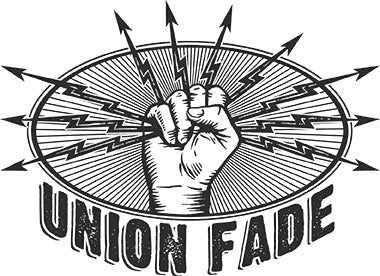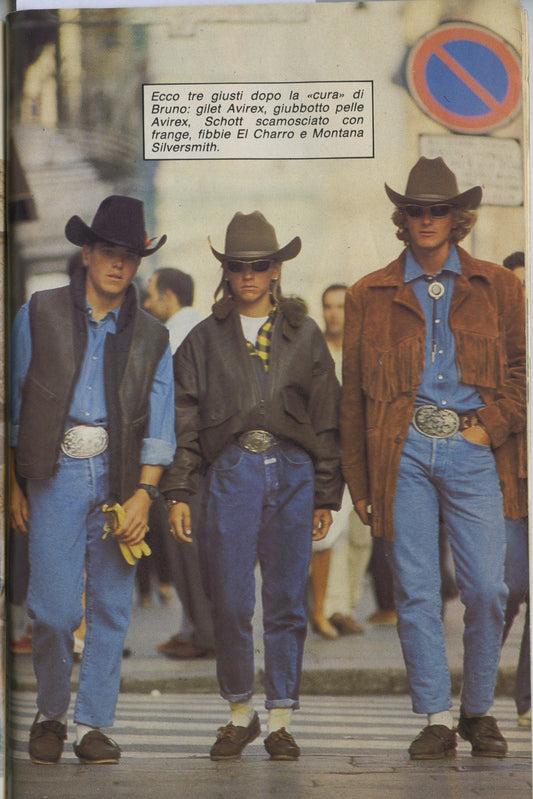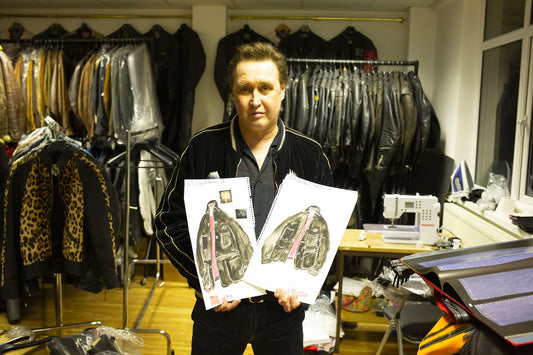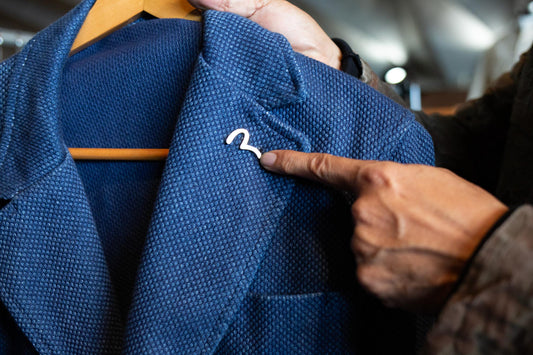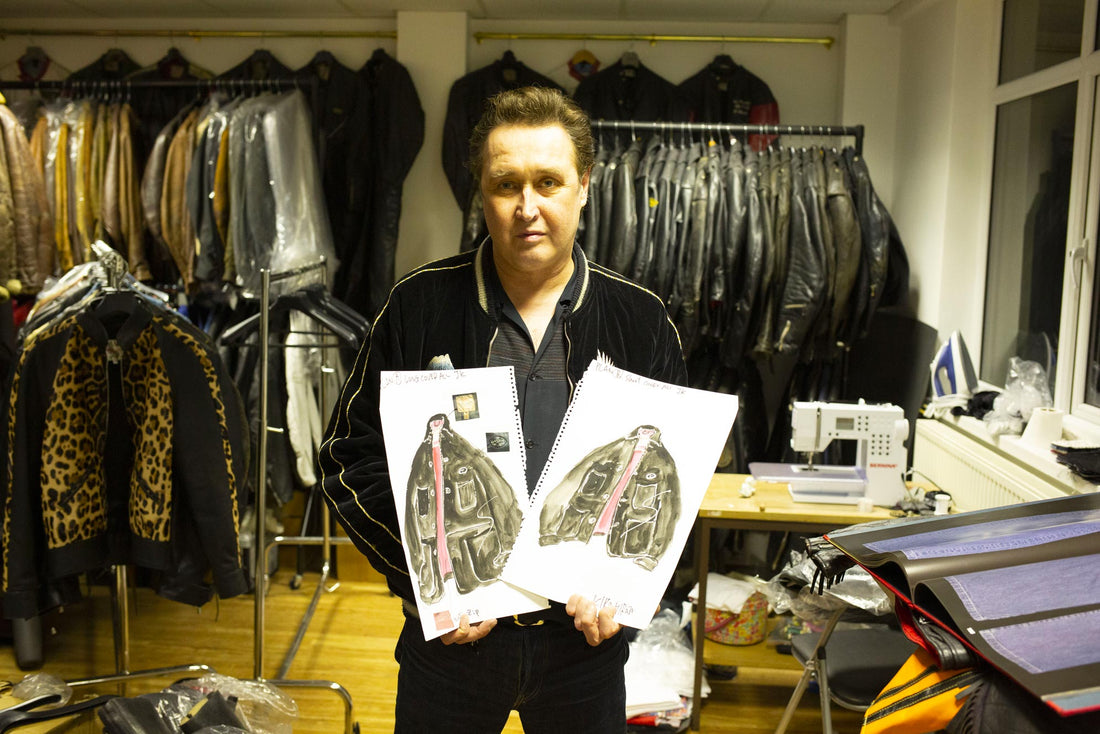
INTERVIEW WITH DEREK HARRIS - LEWIS LEATHERS
Share

CAN YOU TELL US IN A FEW WORDS YOUR BACKGROUND BEFORE LEWIS LEATHERS AND HOW DID YOU GET INVOLVED WITH THIS HISTORICAL BRAND?
I'm not a motorcyclist - and I wasn't from the fashion world either - I've done many different things along the way. Before working at Lewis Leathers I used to design tees which I sold in a Portobello Road shop, I have also worked as researcher for several companies... but I've always been fascinated by the Brit subcultures, actually as a young guy I was a punk rocker; that's the true connection! I'm old enough to remember the '60s mods and rockers - I used to see all those guys wearing leather jackets and to me it was really exciting; in fact already in the 1960s I knew LL jkts, their advertisements appeared in many magazines (recently I found one of them in a 1962 Jazz Music magazine), and I saw 'em worn by bikers and I used to think: “They must definitely be Lewis Leathers!” - clearly because it was the only leather jacket brand we recognised at the time... around ten years later, as a teenager, I was in love with the Sex Pistols and The Clash and I clearly remember seeing the Clash with the LL jackets and it made me think: “Wow, these are 'real' leather jkts, not the fashion ones produced by designers that most artists wore at that time!” - those were the old days' true street clothing, besides having a deep history and heritage. Finally, towards the end of the '70s, at twenty-years old, I bought my first Lewis, but I didn't make direct contact with the company until 1991, at the time I worked with a Japanese company who handled rock-style garments - so jackets for the mods, punks and skinheads etc - and they asked me to source British leather jkts. To me in this field (not only for the bond with punk) the best jackets were by Lewis Leathers, but I quickly noticed that somewhere between the 80's to the '90s their quality and features changed - like the black nylon lining in place of the soft red fabric, also the labelling was a bit different from the original - things I noticed since I was wearing and working with vintage a lot... anyway, given my experience within Japan, I realised that several Japanese denim brands were making replicas of the old Levi's, Lee and other models with an out-and-out obsession. That made a big impression on me, so that I talked to the old Lewis Leathers' owner about doing something similar with Lewis jackets, and I even persuaded him that more jackets could be sold - especially in Japan - by rediscovering the detailing of the classic styles up until the '70s. And he was immediately interested! So I went to the Portobello Road market, where, at the time, I could buy Lewis jackets for £15-£25 - some very remarkable old LL jackets - and by examining the zippers and other detailing, I realised that I could define, more or less, the period they were made. Anyway, I chose the styles I was interested in and passed them to a pattern maker, these new patterns were then sent to Lewis Leathers, along with re-made labels and linings and the first pieces of the new range were made... Little by little I found myself becoming a collector and my expertise increased the more I became involved, and to me it was really wonderful, I was having a great time! Finally, in 2003, after a long period running their production and working closely with the factory, I bought Lewis Leathers from Richard Lyon - the owner before me.

IN THE IMAGERY OF EVERYONE LEWIS LEATHERS IS A MOTORCYCLE BRAND - HOW WAS THIS STRONG BOND CREATED?
At the beginning of its history, D. Lewis (the name of the founder and of the brand since 1892) was selling tailored daily wear, clothing such as men's classic coats
and suits, but the street it was located in - Great Portland Street - from an early time one of the fashion industry's cornerstones, the companies based there produced clothing to be sold in nearby Oxford Street and central London. Big changes took place in the street after WWI, many motor car showrooms slowly moved there - carrying a great number of cars and bikes' enthusiasts, and so D. Lewis Ltd had to adapt itself to the different requests from customers who were coming to the area, moving the production towards warmer clothes ideal for racers and drivers... a direction which continued (especially for the two-wheeled customers) after WWII. Actually in 1926 we created our first suit for competitive motorcycle racings, prior to that we were mainly focusing more on garments, like leather coats and helmets for motoring & flying. During WWII we supplied kit to the RAF - but also to TT Racers and above all Speedway riders; Speedway was an activity that became very big during the war as it helped to detracted the people's attention from the problems created by the conflict. Another aspect that had a big impact on the company in those post war years was the fuel issue; due to rationing it was possible to only buy a limited amount of it each week, and given the reduced amount of petrol needed by a motorcycle as compared to a car, there was a boom in two-wheeled travel - likewise for the related apparel - D. Lewis had already plenty of experience in this field and prepared to expand production!



SO WE CAN SAY THAT THE TIME AROUND MID '50S REPRESENTED ONE OF THE MOST IMPORTANT PERIODS FOR THE COMPANY?
Definitely! In that period the brand also noticed that teenagers were yearning to wear something newer and particular to their own generation, prior to this, the young motorcyclists often wore ex-WWII clothing, like flying jackets and boots - it was back
then, in '55-'56, that our first black leather jkt with red lining came out, The Bronx jacket - the Lewis Leathers brand name made its official debut in 1960 (until that moment everything was under the D. Lewis Ltd and Aviakit labels). The company also started to produce more casual clothing, different styles of jackets and boots, items to suit the tastes of up-to-date young people as the post-war trend of the teenager took off. Studying old catalogues again, it is clear that the LL products made during '60s and most of the '70s were key and very positive moments for the brand.



WHAT ARE THE MOST IMPORTANT STYLES REGARDING THE HISTORICAL EVOLUTION OF LEWIS LEATHERS?
I think we have to go back to around the '20s-'30s, with one of our first models: the Universal Racer Jacket, with button-up front and Mandarin collar. From the same period we must also mention the 702, a diagonal zip fronted jacket with a functional D-pocket (for maps), the 702 represents the genesis of the timeless Bronx jacket - the '50s model which became the firm favourite of the Ton Up Boys and Rockers.
After that, a really remarkable style is the Lightning, with four zip pockets, two horizontal and two vertical ones on the chest along with the four waist adjuster belts, placed at the sides so as not to scratch the bikes' tanks when bent-forward riding TT style. Possibly the Lightning is the most representative jacket silhouette of Lewis Leathers - regarded these days as the iconic British motorcycle jkt. Finally arriving at my favourite, the Dominator Jacket; a style born around the '60s with two horizontal chest pockets, sturdy front zip and red lining that achieved resounding success over the past 20 years, partly thanks to Sid Vicious, the Sex Pistols' bass player, who wore one in the mid 70's. In the end, we mustn't forget the Cyclone, Super Phantom and Sportsman jackets - pieces from the mid to late'70s that, together with all the above-mentioned ones, are the Lewis Leathers key models still in production, and popular to this day!



WHO ARE THE MOST REMARKABLE CHARACTERS OF THE MUSIC SCENE THAT HISTORICALLY WORE THE LEWIS LEATHERS JACKETS?
For sure around the end of the '60s and '70s Sid Vicious of the Sex Pistols, the whole The Clash band, Rat Scabies and Brian James of the Damned, Viv Albertine of The Slits and many more from that period - but also nowadays we have stars like Pharrell Williams, The Arctic Monkeys and Iggy Pop wearing our jackets!
WHY WAS LEWIS LEATHERS THAT CRUCIAL FOR THE BRITISH SUBCULTURES?
The Lewis company were shrewd at marketing and moving with the times,
although the main range of jackets and clothing was made for motorcyclists, advertising was placed in magazines aimed at music fans and also general newspapers and the popular press. Therefore, many more people were aware of Lewis Leathers clothing and customers associated it with style as well as motorcycling. However, the look of most of our jackets was of a motorcycle style and was a garment which carried a sense of danger about it, which appealed to many young people during the 50's and 60's whether they rode bikes or buses.

CAN YOU EXPLAIN TO US THE INFLUENCE BETWEEN THE AMERICAN AND BRITISH LEATHER JACKETS STYLES?
It's a very interesting question because, to me, different elements of the American jackets already existed here in England possibly before they appeared in American jackets - for instance, I was chatting with Rin Tanaka, who as you know clearly studied vintage leather jackets very deeply, we talked about the D-pocket (the typical D letter-shaped pocket) and he explained to me that in US jackets it was used as a pistol pocket, moreover the oldest American one he was able to find was from the '30s - and I replied him that I own a British one from the '20s by D. Lewis and that this pocket was created to hold a map! An element that strongly contributed to the influence between American and British moods is WWII, for sure in those times many motorcycle enthusiast-soldiers and airplane-pilots were based in England, and it's very likely that some bought jackets here to take home to the USA - possibly contributing to the fusion of the different designs. Also the motorcycling world has always been a fertile ground where the American and British style crossed over: in the early '60s Steve McQueen came to England to shoot movies and he bought one of our Universal Racer Jackets and a pair of our leather pants which he wore on his bike - when he visited the UK before the1964 ISDT Race he visited Lewis Leathers and bought several garments, goggles, helmets and other accessories for the whole American team! But also people just travelling around America, Europe or England, or the ones working in the motorcycle clothing field would possibly have bought garments on their travels to then return overseas, and thereby spreading the fusion between the two looks!
CAN YOU TELL US MORE ABOUT THE PERIOD WHEN YOU USED TO PRODUCE FLYING GEAR GARMENTS?
We were already producing flying gear in the ’20s, as you can guess that was only wealthy people could afford an airplane, so it was a good business at that time for the company; then when WWII exploded, the ones able to fly a plane were automatically enlisted for the British Air Force - but being part of the high-society's
families they were also allowed to wear civilian clothes, sometimes the ones supplied by the government weren't properly sized, so often they had their jacket style or military boots made from us or other tailors. Our classic white aviation-over suits were a wonderfully selling product, especially useful for covering the official RAF uniforms; but I have to say that they were also used by the car racing enthusiasts of the day, members of the famous Brooklands Boys often wore these suits as well!
WHICH ONE IS THE DETAIL THAT MAKES YOU RECOGNISE A LEWIS LEATHERS JACKET AT FIRST GLANCE?
To me it's always been the sleeve zipper pocket, a detail which was always exclusive to LL jackets, in the mid '70s, I saw a picture of the Clash's guitarist and I immediately recognised the jkt was by LL just by seeing the zipper pocket on the sleeve. Unfortunately nowadays many companies draw inspiration from our products and copy these details but it's still easy to recognise an original LL jacket. Especially if you take a close look at the cut and design, the jacket's tailored fit and also the curve of the sleeves (typical of bike-wear) - to me they're unmistakable details making the Lewis Leathers jkts different from all others. That's why so many people, in the past and to this day, like music stars, lovers of stylish clothing and motorcyclists grew fond of our jackets!
HOW MANY LEWIS LEATHERS PIECES DO YOU OWN IN YOUR PERSONAL COLLECTION AND WHICH IS THE BEST ONE?
If we take into account not only the clothing but also the goggles, gloves, boots, there are about 400 to 500 pieces - really a lot, right? Anyway I think the 702 D-pocket jacket from the '20s which I mentioned before is one of my best pieces; I'd say nowadays I'm trying to find garments that aren't featured in our catalogues - the names of which we obviously don't know - never-seen-before looks, and also
those more ancient models and accessories such as the Universal Racer, or just like the old company catalogues, these are the items I am still avidly looking for.
LET'S END WITH THE FUTURE PLANS FOR LEWIS LEATHERS - WE KNOW ABOUT THE BOOK YOU'RE REALISING WITH RIN TANAKA, BESIDES THAT ARE THERE OTHER PROGRAMMED PROJECTS?
The book should have been ready for the end of 2015, but it will certainly be released later this year; I can't wait to see it finished because Rin took pictures of the
almost the whole of my vintage collection, its been a long job... 25 years of research and all of the history of Lewis Leathers will be main theme for this book. Other than the book, the production of leather jackets will remain the path to follow, and I'm going to keep on researching the company's history; I'd also like to increase our range of products but we are a small team and take a step-by-step approach to what we do, progress sometimes seems slow as we are a small team, but you never know what is going to happen in the future - maybe we will surprise you!
